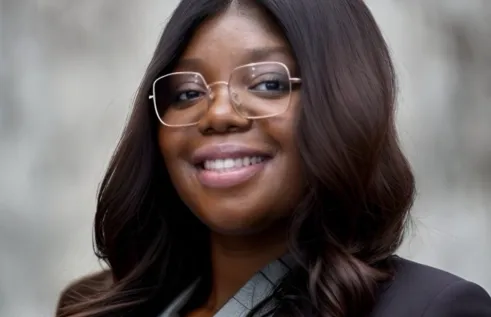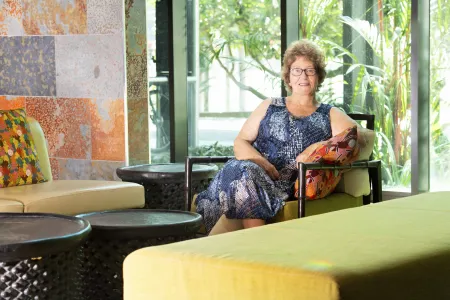News article
Comms is key to more just treatment of First Australians
Charles Darwin University researcher Dr Lorraine Teece was distressed as she sat in a law court watching an Aboriginal man, who obviously had little understanding of proceedings against him, nodding in agreement with all that was being said to him and about him.
Dr Teece, whose PhD thesis is titled “Communication and Justice: The Introduction of Visual Cues into the Court System to Improve Justice Outcomes for Aboriginal People”, will receive her PhD at the CDU graduation ceremony on October 18.
Seeing the man in the courtroom that day, Dr Teece said: “I knew then that I had to try to do something to help First Australians have a better understanding of courtroom situations and to raise the awareness of law court personnel about Aboriginal communication behaviours.
“Legal practitioners and court workers are often seemingly unaware of First Australians’ communication behaviours and misinterpret silences and single word responses to complex questions,” she said.
“My research focusses on how misunderstanding of these culturally based communication systems can mitigate against fair and reasonable treatment of Aboriginal people within court proceedings.”
Dr Teece said Australian courtrooms were steeped in Western traditions that included hidden protocols heavily reliant on complex formal and legal language, which in many cases involving First Australians mitigated against their being able to properly understand questioning techniques.
“There has been limited research into modifications required in court systems and behaviours to make the processes and questioning techniques clear to Aboriginal people, to allow them to answer questions and make statements in the way their cultural upbringing dictates,” Dr Teece said.
“The responses to the major survey of my thesis clearly indicate major areas of disadvantage faced by First Australians when dealing with police and during the legal proceedings.”
Dr Teece said cultural behaviours that were misunderstood included lack of eye contact, the use of silences before answering questions and the use of gestures to aid verbal communication.
“Then there is the lack of knowledge with Western concepts such as ‘time’, and problems with comprehension of the threads in complex questioning,” she said.
Dr Teece proposes that a system of visual interpretation aids could support First Australians’ understanding of language used in courts and result in clearer communication between court officials and Aboriginal defendants and witnesses.
Related Articles

Conservation planning ‘good for biodiversity and business’
The Northern Territory’s investment in solar and wind energy production needs to benefit people and the planet, but new research highlights critical pitfalls in planning.
Read more about Conservation planning ‘good for biodiversity and business’
Where rubber meets the road: Old tyres are key to building tougher roads
Almost half of the Northern Territory’s worn-out tyres end up in landfills – with the rest exported interstate for recycling – but a study led by Charles Darwin University (CDU) is repurposing the discarded rubber to build stronger, sustainable roads that meet the NT’s unique needs.
Read more about Where rubber meets the road: Old tyres are key to building tougher roads
Social media subjecting Black women to radicalised digital policing
Influencers use oppression, manipulation and weaponisation to police Black women on social media, according to new research uncovering the entrenched nature of digital racism.
Read more about Social media subjecting Black women to radicalised digital policing
